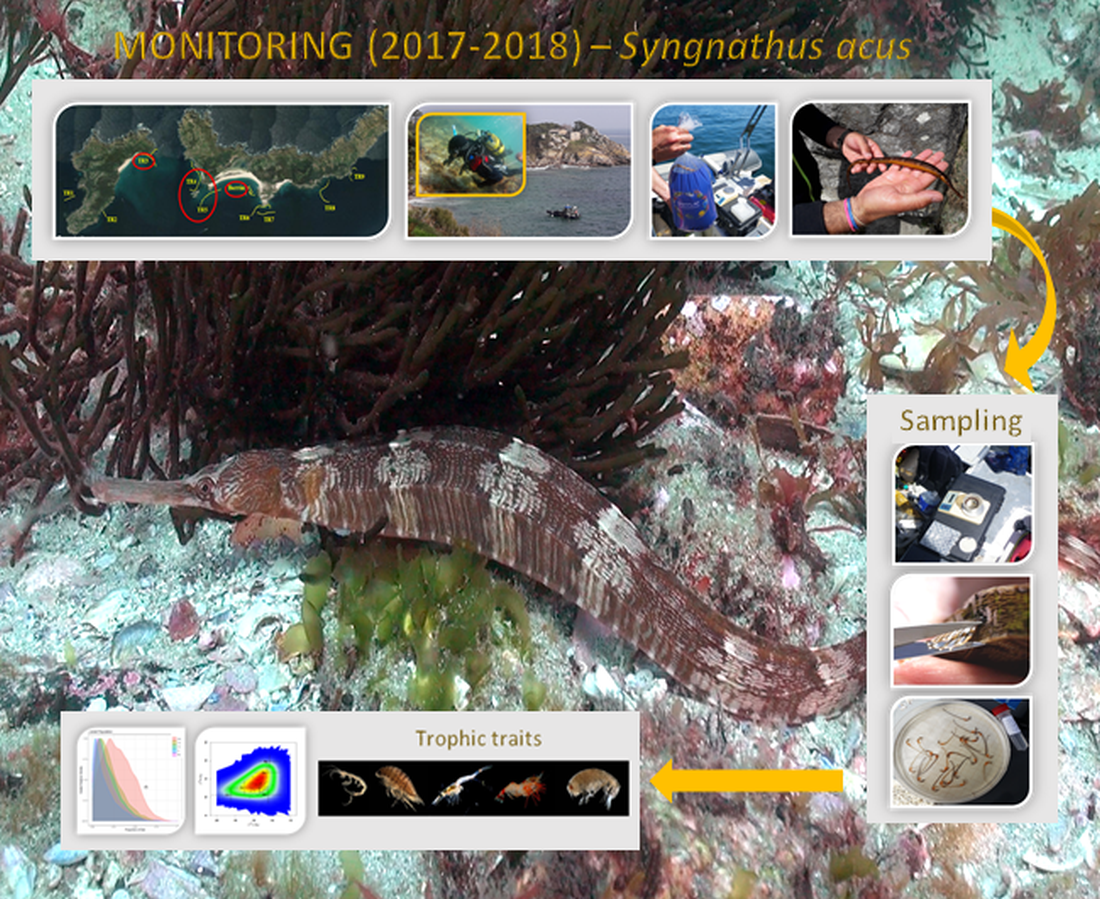The great pipefish Syngnathus acus is one of the most representative European syngnathid, being highly associated with seagrass and macroalgal beds. Surprisingly, the ecology of this ovoviviparous marine fish has received scanty attention. The population inhabiting three sites on Cíes Archipelago (Atlantic Islands National Park, NW Spain) was monitored in 2017-2018 for spatial and temporal changes in abundances, reproduction traits, trophic niche occupancy and dietary regimes across reproduction states through an isotopic (δ13C and δ15N) approach. Abundances were highly variable across seasons and sites, decreasing significantly from mid-autumn. The population consisted almost exclusively of large adults that migrate by the end of the breeding season, which extended from mid-spring to summer. Operational sex ratios suggest that the species is sex-role reversed. S. acus is a secondary consumer (Trophic position= 3.36 ± 0.05) preferring amphipods but displaying annual and seasonal dietary plasticity. Mature fish were less selective than immatures (especially females) with a higher preference for amphipods (36-68%) in the former. The second most preferred prey were carideans, copepods or isopods, depending on the year and reproduction state. Overall, the wider trophic niches in females and immature specimens compared to males and mature fish would indicate a higher variability in both the use of prey resources and/or their origin. The present study highlights the trophic plasticity and unique features of S. acus population in Cíes Archipelago, especially regarding the outstanding size of the fish and the exceptional occurrence of breeders.

